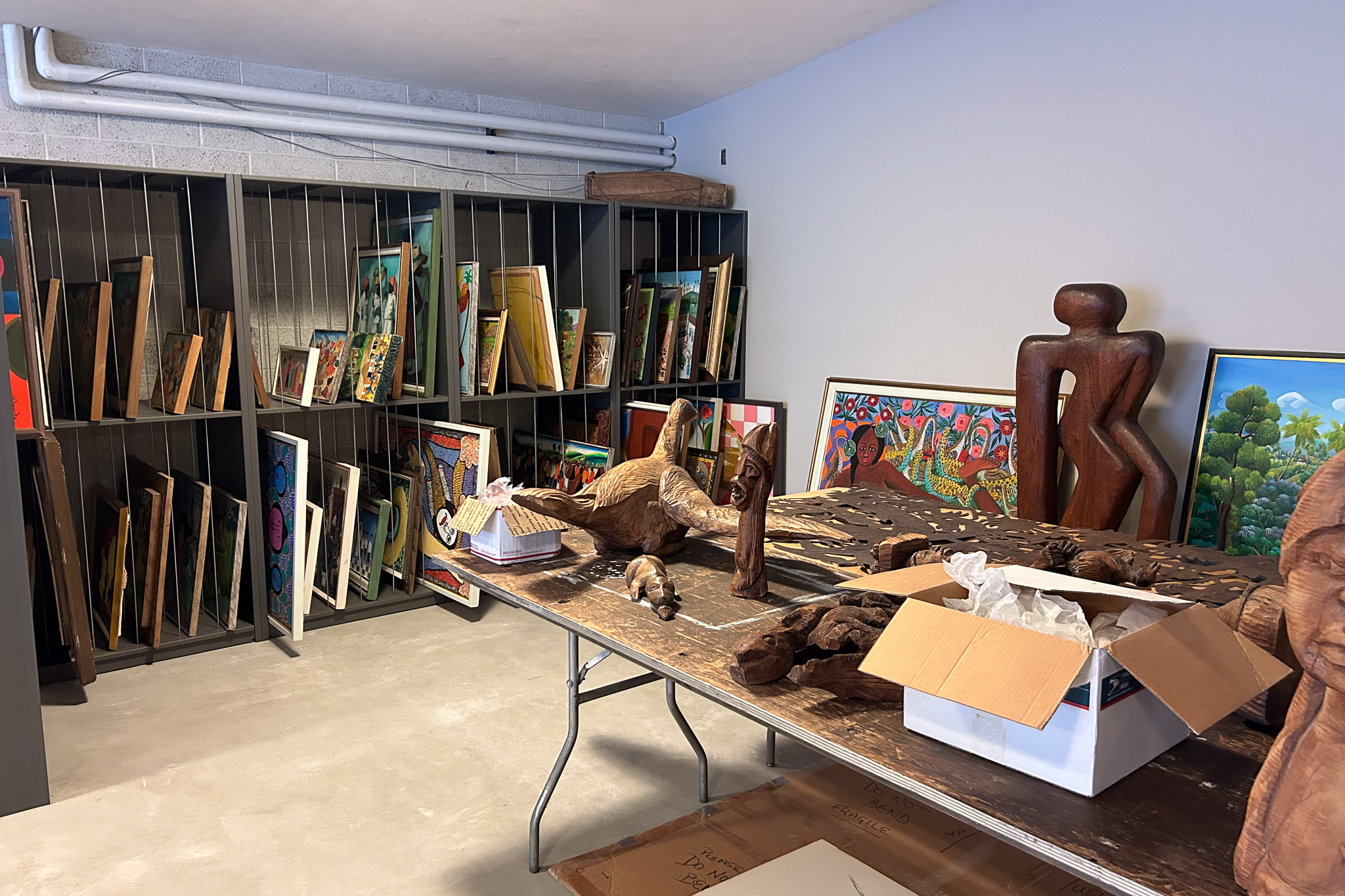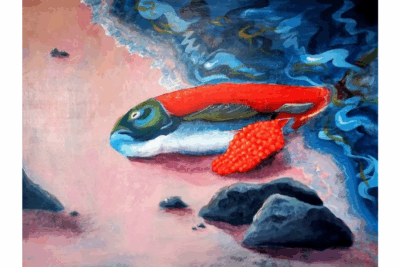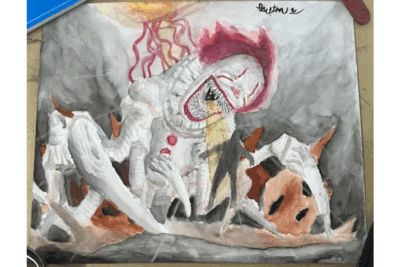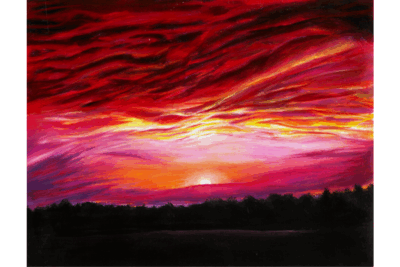When you enter the side door of the Union building and walk toward the campus post office, you pass a door that almost blends into the wall — not wanting to attract attention. With a faculty key, the door opens and you ascend two flights of stairs.
Through another door, you enter a mysterious space. Imagine a giant storage room filled with history and creativity — an art gallery tucked away far off of the beaten path. This is the home for Goshen College’s art collection, which consists of more than 200 unique pieces.Since she started teaching at GC two years ago, Sara Method, an assistant professor of art, has overseen the collection — both the works in storage and those on display. She shares this responsibility along with Tiffany Wyse-Fisher, another assistant professor of art.
“One of my hopes is to help people know more about the actual collection that we have as an educational opportunity, to learn about the artists that we have and display,” Method said, “but I also want there to be more of a broader institutional knowledge of what we have.”
It’s hard to not stop and admire the pieces. While taking a tour of the art storage room, Method and another visitor periodically took long pauses to examine each piece before moving onto the next thing that caught their eye. A particular landscape painting in a thick golden frame seemed to reach out to us.
“Scene from Brown County” by T.C. Steele is bright, but shy. Theodore Clement Steele, an artist who lived on a 211-acre property in Brown County, Indiana, painted using oil and impressionism techniques in his home studio in 1907. Steele was considered one of the first Hoosiers to focus on making a living by creating stunning landscape paintings of the Midwest. Due to the age of this oil painting and sitting in the dimly lit Union storage for years, it has grown wrinkles throughout its skin — the canvas cracking due to age.
Different mediums of art like painting, textile, sculpture and manuscripts age differently due to the quality of materials the artist used and the environment the pieces are stored in. Some pieces like T.C. Steele’s oil paintings, are in desperate need of a spa day at the restoration lab.
Merrill Krabill, a longtime art professor who retired last summer, provided insight about funding for the art collection. “For a long time, there was a fund that was designated just for the art collection,” he said.
That funding has now been cut. All the money used to buy new artwork, restore artwork and seek appraisals must now come directly out of the art department’s budget.
John Blosser, another longtime art professor who retired 13 years ago, commented on the difficulties of collecting so much art: “part of the problem is we don’t have good storage.” “Where do you put all this [art]? How do you maintain it? What do you spend [art department funds] on? Whose artwork do you buy? Somebody’s got to — it’s work.”
Method expressed, “It’s hard to manage [the art collection] as a department with two full-time faculty, to try [and] figure out where to [display artwork] … A larger institutional connection and interest would be really helpful to figure out how to highlight this asset that we have.”
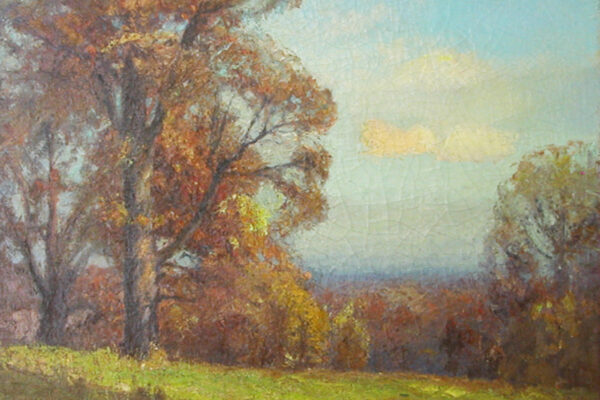 “Scene from Brown County,” oil on canvas, T.C. Steele, 1922.
“Scene from Brown County,” oil on canvas, T.C. Steele, 1922.
Two years ago, “Enter the Rice Cooker”, a screen print, which Blosser described as “a very sexy looking woman behind a glass and a kabuki theater man carrying an electric rice cooker,” was temporarily moved without permission of the art department. A staff member who was unfamiliar with the history of the
artwork and worried that it might offend visitors took the print down.
The piece was created by Roger Shimamora, a well-known printmaker who plays with irony in both American and Japanese pop culture. Shimamora and his family were forced into internment camps during World War II due to the bombing of Pearl Harbor. Some of his artwork explores the struggles of living in internment camps and draws on his grandmother’s diary during this time. He gifted the artwork to GC as the Erik Yake Kenagy Visiting Artist in 2006.
Krabill shared an interpretation of “Enter the Rice Cooker”: “It’s a critique,” he said. “[The print] is exposing the racism that was prevalent and not emphasizing the racism that’s present. Just by looking at it, it looks offensive, if you don’t know that the artist is Japanese, [and] you don’t know the whole [story] … that’s a real challenge for art.”
“In some ways, the best art is not the easiest art [to understand],” Krabill elaborated. “The [art] that everyone likes isn’t necessarily the [art] that is for you — and sometimes the [art] that has more of your heart and soul in it. Sometimes people just don’t know how to see it.”
“Art, if it has any reason to exist, should be confronting our value systems, beliefs and understandings of the world and each other,” Blosser said. “Sometimes we come with our prejudices. We need to have those challenged, [which] includes faith issues, political issues and cultural issues. That’s what [GC] has been about for years.”
Blosser continued to relate the purpose of art to her hopes for the GC art collection moving forward: “I really think the art collection is a way of reflecting who we are and who we value … Anybody who comes [to GC] should be able to see something that makes them feel at home, feels like, ‘Oh, that’ s me!’”
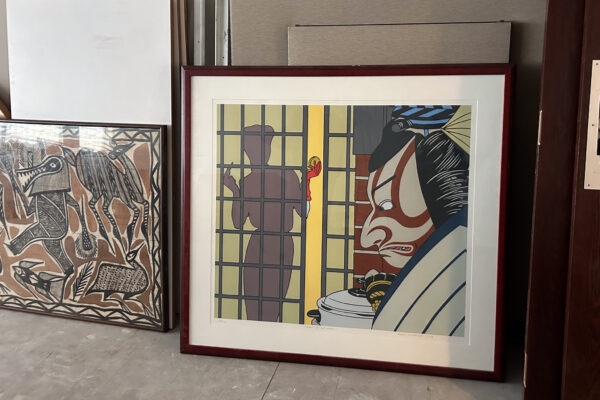 “Enter the Rice Cooker” waiting for a new home.
“Enter the Rice Cooker” waiting for a new home.
